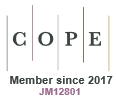Corrigendum to: Occurrence of Nocardia in near shore marine environments and its public and environmental implications
Luke Wright , Mohammad Katouli and İpek Kurtböke
Microbiology Australia 46(3) 141 https://doi.org/10.1071/MA25039_CO
Published: 4 September 2025
This article corrects Microbiology Australia [Published 18 August 2025]. doi:10.1071/MA25039
The authors advise of errors in Tables 2 and 3 of the paper. In Table 2, the correct propagation host for phage Ø4 should be Nocardia asteroides (ACM 2963). In both Tables 2 and 3, the correct code for DSMZ cultures should be DSM.
The corrected Tables are provided below.
Table 2.
Details of Nocardia-phages isolated from Sunshine Coast near shore marine environments.
Table 3.
Susceptibility of type species to local nocardiae phages.
| Culture collection strain IDs | Phage susceptibility | |
|---|---|---|
| N. shimofusensis (DSM 44733) | − | |
| N. takedensis (DSM 44802) | ± | |
| N. cumidelens/soli (DSM 44488) | ++ | |
| N. soli (DSM 44490) | +++ | |
| N. uniformis (DSM 43136) | ++ | |
| N. salmonicida (DSM 40472) | ++ | |
| N. pseudovaccinii (DSM 43406) | ++ | |
| N. veterana (DSM 44445) | ++ | |
| N. fluminea (DSM 44489) | − | |
| N. flavorosea (DSM 44480) | +++ | |
| N. asteroides (ACM 131) | ++ | |
| N. asteroides (ACM 2963) | ++ |
+++, highly susceptible (complete lysis); ++, susceptible (complete partial lysis); +, moderately susceptible (lysis and single plaques); ±, low susceptibility (lysis but regrowth of the host); −, not susceptible.


